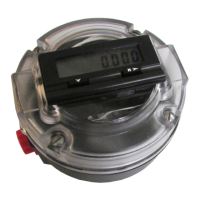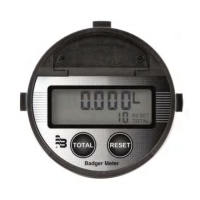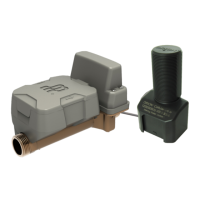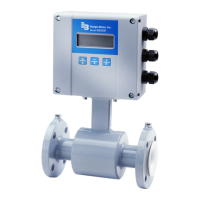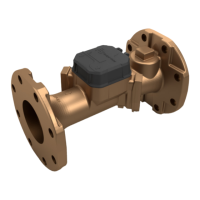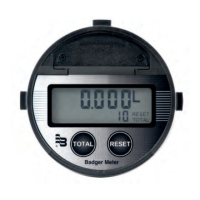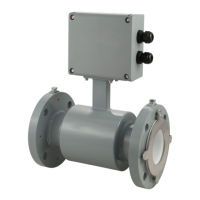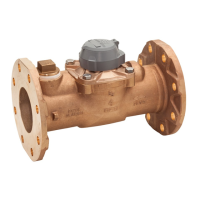For example, if the average flow rate is 100 gpm and the Hysteresis is set to 10%, a filter window of 90…110 gpm is
established. Successive flow measurements that reside within that window are recorded and averaged in accordance with
the Damping setting. Flow readings outside of the window are rejected or accepted in accordance with the
Bad Data Rejection setting.
Filter settings for this example:
Filter Method Adaptive
Damping 40 seconds
Sensitivity 60%
Hysteresis 10%
Bad Data Rejection 3
Flow Within
Hysteresis Limit
±10% Hysteresis
Limit
Flow
150
100
50
0
110
90
Figure 38: Hysteresis window
Bad Data Rejection (Range 0…10 Samples; Default: 3)
The Bad Data Rejection setting is related to the number of successive readings that must be measured outside of a the
Hysteresis value before the flow meter considers the new flow value valid. In this example, a Hysteresis setting of 10% produces
a ± 10% band centered on the current valid flow rate of 100 gpm.
The Bad Data Rejection setting is the number of successive samples that must be outside of the Hysteresis window before
the flow meter considers the change in flow as real. Larger values are entered into the Bad Data Rejection window when
measuring liquids that contain gas bubbles, as the gas bubbles tend to disturb the ultrasonic signals and cause more
extraneous flow readings to occur. Larger Bad Data Rejection values tend to make the flow meter less responsive to rapid
changes in actual flow rate.
In Figure 40 on page 30, flow data falls outside the flow Hysteresis window but does not reach the minimum time specified in
the Bad Data Rejection window. When data appears that is outside the Hysteresis band and shorter than the Bad Data Rejection
window time, the data is rejected.
Parameter Descriptions by Menu
Page 29 October 2019 TTM-UM-02222-EN-04

